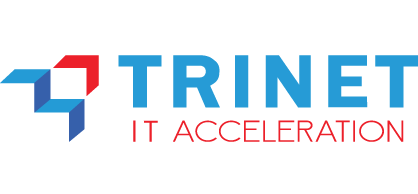Tech Innovation > Security > Network Access Control (NAC)

Network Access Control (NAC)
In today’s modern workplace, organizations face significant challenges in managing access to increasingly complex networks. With the growing number of IoT devices, remote employees, and external vendors connecting to corporate networks, the risk of cyberattacks and unauthorized access continues to rise.
📌 Network Access Control (NAC) is a technology designed to control, authenticate, and secure device access to corporate networks. It ensures that only verified and policy-compliant devices are allowed to connect, enhancing overall network security.
Without NAC, companies face the following risks:
Uncontrolled Access → Unknown Devices Entering the Network Without Clear Authentication
Devices without proper authentication can access the network, posing a security risk.
Network-Based Attacks → Malware and Ransomware Spread Through Unprotected Devices
Malware and ransomware can propagate across the network through devices lacking adequate protection.
Lack of Visibility & Compliance → No Granular Control Over Devices Accessing the Network
Without detailed control over devices accessing the network, visibility is compromised, increasing risk.
Threats from IoT & BYOD (Bring Your Own Device) → Unmanaged Personal Devices as Attack Entry Points
Personal devices that are not managed can become potential entry points for attacks on the network.

Key Features & Capabilities
Network Access Control (NAC) offers features to ensure secure device access and data protection.
Show Details
a. Smart Visibility & Compliance
- Device Profiling & Compliance Enforcement: Identify devices by type, OS, and security policy.
- Dynamic Grouping & Network Segmentation: Group devices based on security rules to reduce the risk of threat spread.
- Support for Wired, Wireless, Virtual, & IoT Devices: Provides visibility for all types of connected devices.
b. Access Control & Threat Mitigation
- Zero Trust Access Policy: Applying the principles “Never Trust, Always Verify” before granting network access.
- Role-Based & Contextual Access Control: Determine access rights based on identity, location, time, and device type.
- Automated Quarantine & Remediation: Isolate devices that are not in compliance with policy or are indicated as security threats.
c. Network & Endpoint Integration
- SIEM, Firewall, & Threat Intelligence Integration: Work with other security solutions to improve response to threats.
- Cloud, On-Premises, & Virtual Deployments: Flexible to be applied in various IT infrastructure models.
- Endpoint Compliance Checks: Ensure devices meet security standards before granting access.

Business Benefits
Network Access Control (NAC) solutions provide strategic advantages for organizations in securing device access.
Show Details
a. Prevent Unauthorized Access & Insider Threats
- Manage devices connected to the network automatically, ensuring only approved devices can access corporate resources.
- Avoid exploitation from unknown devices with anomaly detection based on AI.
b. Improving Network Security Management Efficiency
- Facilitates visibility of connected devices with real-time monitoring.
- Reducing the workload of IT teams with security policy automation & threat isolation automatically.
c. Mitigating Cyber Attack Risk & Regulatory Compliance
- Ensure compliance with regulations such as ISO 27001, NIST, GDPR, PCI DSS, and UU PDP.
- Prevent network-based attacks such as MITM (Man-in-the-Middle), spoofing, and IoT exploitation.
d. Simplifying Access Management with Automation
- Eliminates the need for manual intervention in managing security policies across the network.
- Improve operational efficiency with risk-based access segmentation.

Use Cases
Network Access Control (NAC) provides effective solutions for various security challenges across industries.
Show Details
a. Banking & Finance
- Control employee & device access to core banking systems.
- Ensure compliance with strict banking regulations.
b. Health Services
- Secure access to electronic medical records (EMR) & connected medical devices.
- Ensure only validated devices can access patient data.
c. Manufacturing & Supply Chain
- Manage secure access to industrial IoT & production automation devices.
- Reduce cyber attack risks originating from third-party devices.
d. E-Commerce & Retail
- Prevent customer data theft by restricting access to POS & CRM systems.
- Control vendor & partner access to retail IT infrastructure.
e. Government & Critical Infrastructure
- Secure access to population data systems and public services.
- Provide Zero Trust policies for national security.

How It Works
How Network Access Control (NAC) and Security Awareness Training Protect Against Unauthorized Access:
Show Details
a. Connected Devices Verification
-
NAC verifies device type, user identity, and risk level before granting access.
b. Policy-Based Access Enforcement
-
NAC determines if a device receives full, limited, or denied access based on policies.
c. Monitoring & Threat Detection
-
NAC continuously monitors network activity to detect anomalies or policy violations.
d. Automated Response & Isolation
-
If a threat is detected, NAC can automatically block or isolate high-risk devices.
e. Audit & Compliance Reporting
-
All activities are logged for investigation and security audit purposes.
Contact our experts for further information












